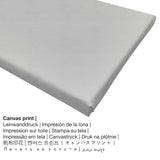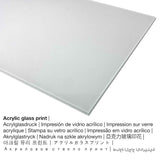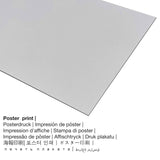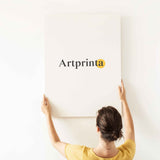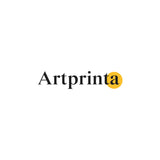Jean Baptiste Vanmour, 1720 - Dina-n'ime ụlọ nke nwanyị Turkish a ma ama - mbipụta nka mara mma.
Ụtụ gụnyere. Mbupu gbakọrọ na ndenye ọpụpụ.
Data ngwaahịa nka
Ọkachamara sere ọmarịcha ihe a Jean Baptiste Vanmour. N'ịga n'ihu, ihe osise a bụ nke Rijksmuseum's mkpokọta dị na Amsterdam, Netherlands. Nke a masterpiece, nke bụ akụkụ nke ngalaba ọha a gụnyere ya na nkwanye ùgwù nke Rijksmuseum.Ebe E Si Nweta nke ihe osise:. Na mgbakwunye na nke a, nhazi ahụ bụ odida obodo na nwere akụkụ ruru nke 3: 2, nke pụtara na ogologo bụ 50% ogologo karịa obosara.
Họrọ ihe ị chọrọ
In the product dropdown menu you can pick the material and sizeaccording to your individual preferences. The following sizes and materials are the options we offer you for individualization:
- Poster (akwa akwa akwa): Our poster is a printed sheet of canvas with a nice finish on the surface. A poster print is optimally suited for framing the fine art print with the help of a custom-made frame. Please bear in mind, that depending on the absolute size of the canvas poster print we add a white margin of approximately 2-6cm around the print to facilitate the framing.
- Mbipụta kwaaji: A printed canvas stretched on a wooden stretcher frame. It makes a plastic effect of three-dimensionality. The great advantage of canvas prints is that they are relatively low in weight, which implies that it is quite simple to hang up the Canvas print without any wall-mounts. Hence, a canvas print is suited for any type of wall in your house.
- Aluminom dibond (ọkpụkpụ ọla): Mbipụta Aluminom Dibond bụ mbipụta ọla nwere mmetụta dị ịrịba ama nke omimi - maka ọdịdị ọgbara ọhụrụ na elu na-enweghị atụ.
- Mbipụta iko acrylic (nke nwere ezigbo mkpuchi iko): An acrylic glass print, often referred to as a print on plexiglass, changes the artwork into beautiful décor. Above all, the acrylic glass art print forms a viable alternative to dibond and canvas fine art prints. Your work of art will be made with state-of-the-art UV direct printing machines. The plexiglass protects your chosen art print against light and heat for many years to come.
Ozi dị mkpa: We try what we can to describe our art products as clearly as it is possible and to illustrate them visually in our shop. Although, the colors of the print materials and the imprint might vary slightly from the representation on the device's monitor. Depending on your settings of your screen and the condition of the surface, not all colors are printed one hundret percent realistically. Since the are processed and printed manually, there might as well be minor variations in the size and exact position of the motif.
Banyere akụkọ
| Bipụta ngwaahịa: | mmepụta nka |
| Usoro mmeghari: | mmeputakwa n'ụdị dijitalụ |
| Produzọ mmepụta: | mbipụta dijitalụ |
| Ihe ngosi: | Germany |
| Ụdị ngwaahịa: | a na-achọ |
| Ojiji ngwaahịa: | nka mgbidi, ime ụlọ |
| Ndepụta: | nhazi odida obodo |
| Ụdị anya: | 3: 2 |
| Ntụgharị nkọwa akụkụ: | ogologo bụ 50% ogologo karịa obosara |
| Ngwa ngwaahịa dị: | Mbipụta kwaaji, mbipụta enyo acrylic (nwere ezigbo mkpuchi iko), mbipụta ọla (aluminium dibond), mbipụta akwụkwọ mmado (akwụkwọ kwaaji) |
| Mbipụta kanvas (akwa akwa n'elu etiti ihe ndọtị) ụdị nha dị iche iche: | 30x20cm - 12x8", 60x40cm - 24x16", 90x60cm - 35x24", 120x80cm - 47x31", 150x100cm - 59x39" |
| Mpempe iko acrylic (nwere ezigbo mkpuchi iko) nha: | 30x20cm - 12x8", 60x40cm - 24x16", 90x60cm - 35x24", 120x80cm - 47x31", 150x100cm - 59x39" |
| Nhọrọ nha nke akwụkwọ mmado (akwụkwọ kwaaji): | 60x40cm - 24x16", 90x60cm - 35x24", 120x80cm - 47x31" |
| Aluminium dibond ebipụta (ihe aluminium) nha dị iche iche: | 30x20cm - 12x8", 60x40cm - 24x16", 90x60cm - 35x24", 120x80cm - 47x31" |
| ụba: | adịghị |
Ozi nka ahaziri
| Aha nke ihe nka: | "Lying-in Room of a Distinguished Turkish Woman" |
| Nhazi nka nka: | sere |
| Otu sara mbara: | nka ochie |
| oge: | 18th narị afọ |
| Emepụtara n'afọ: | 1720 |
| Afọ nka: | ihe karịrị 300 afọ |
| Ụlọ ihe ngosi nka: | Rijksmuseum |
| Ebe ngosi nka: | Amsterdam, Netherlands |
| Dị n'okpuru: | www.rijksmuseum.nl |
| Akwụkwọ ikike nka: | ngalaba ọha |
| Site n'aka: | Rijksmuseum |
Tebụl nyocha nke onye na-ese ihe
| Aha onye nka: | Jean Baptiste Vanmour |
| Aha ndị ọzọ: | Vanmour Jean Baptiste, Mour Jean Baptiste van, Mour, Vanmour Jean-Baptiste, Van Moor Jean Baptiste, J.B. van Moor, Van-Mour, Mour Jean-Baptiste van, Van Mour Jean-Baptiste, Van Mour Jean Baptiste, Jan Baptista van Mour, Jean Baptiste Vanmour, Jean Baptiste Van Mour, Vanmour, Moor Jean-Baptiste van, Van Moor Jean-Baptiste, Jean-Baptiste van Mour |
| okike onye nka: | nwoke |
| Nationality: | French |
| Ọrụ: | onye na-ese ihe |
| Country: | France |
| nhazi ọkwa: | nna ukwu ochie |
| Nwụrụ na afọ nke: | 66 afọ |
| A mụrụ: | 1671 |
| Ebe omuma: | Valenciennes, Hauts-de-France, France |
| Nwuru: | 1737 |
| Nwuru na (ebe): | Istanbul, Istanbul, Turkey |
Enwere ikike nwebiisinka © | Artprinta (www.artprinta.com)
Nkọwa mgbakwunye site Rijksmuseum (© nwebiisinka - Rijksmuseum - Rijksmuseum)
A maternity visit takes place in the home of a well-to-do family. Coffee is brewed on a brazier in the middle of the room, while at left a slave is busy preparing sorbet. Once the guests have taken these refreshments, they are offered rosewater from a sprinkler to clean their hands, and perfume from a vaporizer. The cloths hanging on the wall are traditional gifts from the visitors.


